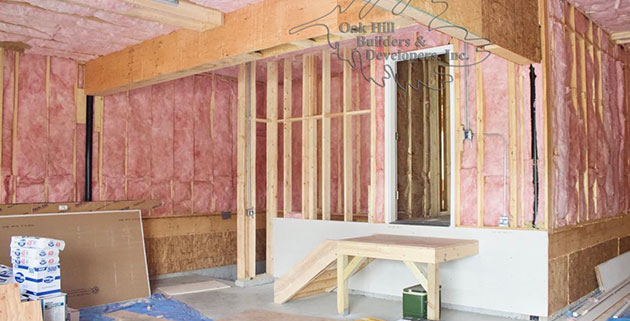Homeschooling, Buyers learn – Chicago Tribune – 11/8/2003
Homeschooling, Buyers learn – Chicago Tribune – 11/8/2003
Article Source
Joseph Lajeune’s new condo in The Edge Lofts and Tower development in Chicago is his third round with new-home construction, so he’s seen the builder-buyer relationship evolve.
“Used to be, [builders] threw up a mobile home on the site, took your money and called you when they were done,” he says. “Now, they are communicating with their buyers, telling them about their progress.”
While he waits for his two-bedroom condo to be completed, the developer, Conversion Marketing and Management Inc., keeps him and other buyers informed through a newsletter.
When he wants to visit the construction site, Lajeune dons the hard hat the developer gave him. By attending The Edge buyer get-togethers, he’s learned, for example, the pros and cons of various countertop materials and has compared oak and maple flooring.
Mary Alice Brophy says she doesn’t consider herself well-versed in construction. But she does know the R-value of her house’s insulation and how the ventilation system works.
The builder of her new, single-family house in the Estates of Inverness Ridge, Philadelphia-based Toll Brothers, walked her through the construction process, literally.
Before signing on the dotted line, Brophy attended one of Toll’s “Meet the Builder Days.”
“First, we show you a house under construction,” explains Andy Stern, Toll’s assistant vice president, of his “Builder Days.” “There, the buyers can touch, smell and feel the materials and our construction managers can explain the nuts and bolts of what’s behind the drywall. Then, they tour a house that’s been trimmed, where the subs show what goes in after the drywall. Then, they see a decorated model, where a designer offers decorating tips.”
While her house was under construction, Brophy was assigned a manager to answer her questions. “Her name was Char and I called her often,” says Brophy. “Or, she’d meet me at the house.”
Lajeune and Brophy are among recent buyers participating in a trend in the new-home industry that could be labeled Construction 101. Through tours, videos, Web sites and brochures, builders are becoming teachers, too.
It is a national trend, reports J. Mark Harrison, executive vice president of the Home Builders Association of Illinois.
“The good builders have always been good hand-holders, but now the process is more formalized,” he says. “It started with small builders who did it, and still do, one-on-one, and worked its way through the industry in the last few years, especially.”
Harrison credits the Internet, HGTV and home centers’ how-to workshops for making the buyer more construction-savvy. “Now, they’re coming to the builders with more knowledge and with more questions,” he says.
“The educated customer is our best customer,” says Andy Konovodoff, executive vice president of operations of Town & Country Homes in Lombard. “We want them to understand, for example, how the air recycling system works, why every window is at least six inches from corners and how we nail the floors.”
At Town & Country’s “Wonder Home Workshops,” buyers and prospective buyers learn about the workings of a home’s plumbing, electrical, ventilation and heating, and air conditioning systems. They learn about framing techniques, building inspections and what it means to “wrap a house.”
Small and medium-size builders have become teachers, too, though their classes are smaller.
“Every builder who wants to be in it for the long haul has to,” says Tom Robinson, president of Roselle-based Robinson Homes, which builds 25 homes a year.
Robinson gives his buyers a 105-page manual that tells them everything from what to bring when they meet with their loan officers to how to change a furnace filter. His superintendent meets with buyers for a pre-construction conference when he explains the construction schedule. He gives them “question fax forms” they can use to fax their questions to Robinson during construction.
Before Robinson’s crew hangs the drywall, they host a behind-the-walls tour and encourage the buyers to bring cameras to record the location of the studs — handy information when they hang pictures and curtain rods.
Then, they host a “new home orientation,” which includes practical information such as the location of the water shut-off valve.
“Tell it like it is,” says Nick Stanitz, president of Oak Hill Builders and Developers in Naperville, who builds 40 homes a year. “Builders have to take this attitude, or we lose out to other builders who will.”
Stanitz gives his buyers a handout called “Factors to Consider When Purchasing a New Home,” then supplements it with videos, brochures and newspaper articles that explain products and certain aspects of construction.
“I tell people they know more about the cars they buy than houses and they laugh,” says Stanitz. “Then they say, `You know, you’re right.'” Stanitz makes sure his buyers know the difference between six- and eight-pound carpet pads and OSB and plywood, and that an air conditioner’s “SEER” has nothing to do with its spiritual insight.
“A lot of the new products are things buyers have never heard of, so I explain how they work and why they should have them, such as the new ultraviolet filters that are a godsend for people with allergies,” says Stanitz.
Though buyers arrive at their builders’ offices with more information than ever, not all that information is correct, say the builders.
“A buyer will say, `You’re charging $100 for that fixture, but I saw that it at Home Depot for $50,'” says Peggy Taheri, vice president of sales and marketing at Smykal Associates in Wheaton. “So, we explain that the fixture doesn’t just jump into place by itself. Several trades are involved.”
To equip her staff to answer buyers’ questions, she brings speakers to their weekly meetings. Recent speakers included an architect
and a bank officer.
Most of the builders mentioned here offer Web sites for additional research. Many include links to product manufacturers and industry associations.
Construction 101 mirrors what is happening in other service professions, including medicine and legal, says attorney Deborah Balliti, chairwoman of the American Bar Association’s Forum on the Construction Industry.
“Clients are more sophisticated,” she says. “And, there is more litigation. So builders recognize the need to educate their buyers. If there is litigation down the road, they want to be able to prove that they made the buyer aware of the materials they were using.”
Chalk it up to our litigious society, the savvy consumer, the almighty Internet and a greater number of builders vying for home buyers’ dollars. For a number of reasons, construction sites are no longer forbidden territories for new-home buyers.
Now, they are working classrooms, where not everyone with a hard hat is a contractor.



